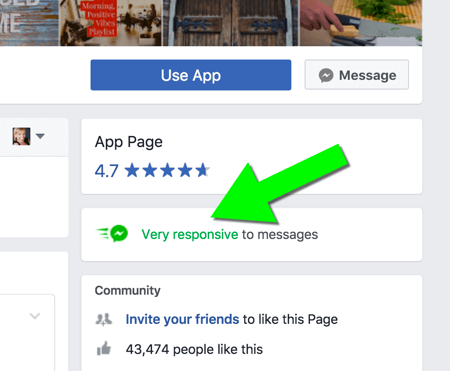As any eCommerce entrepreneur can tell you, great customer service is absolutely critical for running a successful store.
No matter what you’re selling – or who you’re selling it to – your customers need to know that it’s easy to get help with their orders, resolve shipping and delivery difficulties, and get the support they need to solve any issue related to your online store.
So, how can you improve your eCommerce customer service?
We’ve put together 6 helpful eCommerce best practices that can help ensure better customer satisfaction, higher reorder rates and a high-quality shopping experience for your customers.
→ Related: How To Implement A Customer Service Strategy & Why You Should ←
1. Make Shipping and Return Policies Clear
First and foremost, you need to make sure that your return and shipping policies are crystal-clear. Your shipping policy needs to outline:
- Expected processing time for each order.
- Delivery time for each type of shipment (ground, express, expedited, etc.).
- Whether or not orders are processed/shipping on non-business days.
- Policies for items damaged during shipping.
- Customs, duties, and taxes that must be collected from each order.
- P.O. boxes or APO/FPO addresses shipping policy.
This template from Termsfeed is a great place to start if you don’t already have a shipping policy clearly listed on your website.
A return policy is just as important. Among other things, your return policy needs to outline:
- Whether returns are accepted and how long customers have to return an item (14 days, 30 days, etc.).
- The condition an item must be in when returned (unworn, unwashed, complete with tags, packaging, etc.).
- Whether the refund will be issued to the original method of payment or an alternative, such as store credit.
- Refund policies for defective items.
- Whether or not you will refund digital items, like e-gift cards.
- Who pays for shipping for the returned product.
- Where the product must be sent, and which shipping method is required.
- How to print a return shipping label.
Here’s another useful template from Termsfeed which can help you understand more about your shipping and return policies.
→ Related: What eCommerce Shoppers Really Want From Customer Service ←
2. Provide Multiple Customer Service Contact Options
It should be easy for customers to quickly contact your customer service representatives. Ideally, you should allow customers to contact customer service with the following four options:
- Email – Email is the simplest way to organize customer service queries, and it’s a good option for eCommerce websites of all sizes. Make sure you have a unique email address that is exclusively used for customer service requests, to ensure you can stay organized. Mad Mimi, an email marketing platform, only offers email support, but the level of support is unheard of. I’ve sent them emails past midnight on a weekend and have received a response with 10 minutes. Their answers are always on-target and often include a video for multiple step tasks. That’s customer service at its best. And that’s why I still use them 😉
- Phone – 24/7 phone support is ideal for larger eCommerce companies, to ensure that customers can always contact a customer service representative.
Make sure your customer support phone number is easy to find on your printed invoices, return policy page, contact page, and homepage. It’s arguably the single most piece of information on your website. Don’t make customers look for it. If you do, they’ll look elsewhere to make their purchase. - Live chat – Live chat apps like Bold Chat, Zendesk, LiveChat and Pure Chat are often free, easy to integrate into most eCommerce stores and allow customers to connect to customer service instantly via text. We highly recommend implementing a live chat on your eCommerce website, as 42% of customers say they prefer this method of communication over email, phone calls, and social media.
- Social media – If you have a Facebook, Twitter, Instagram, or any other such page, make sure you check it regularly to answer questions and concerns that customers may bring up on social media. And you want to answer these questions fast. Because even though you may not tell customers how quickly you’ll respond, Facebook will:
You don’t want Facebook to display this message:

This is the message you want to get to:

The more ways customers can contact you, the better.
OfficeDepot had the most impressive display of customer service option I have ever seen:

3. Use A CRM Software To Track Customer Issues And Queries
If you’re running a large business and receive hundreds of orders per day, simply using an email-based customer support system may not be good enough to keep you organized.
As your company grows, you should consider investing in a Customer Relationship Management (CRM) software like Zendesk, Zoho, or Salesforce. A CRM includes software tools that will help you organize support queries, manage your open tickets, and streamline your response time to customer issues.
Most CRMs are not cheap, but they are worth the investment. There’s a reason that CRM software is the biggest software market in the world – it’s essential for running an effective business.
4. Focus On Detailed Product Descriptions With High-Quality Photos
One of the best ways to minimize returns and customer issues is to focus on creating accurate, detailed product descriptions and taking high-quality photos of your products.
The more accurate you are about the color, sizing, appearance, and features of your products, the less likely your customers are to order the wrong item and have to return it, or to be unsatisfied by the product once they receive it.
This may seem like a small thing, but the numbers don’t lie. According to Onespace, 98% of customers have been dissuaded from a product purchase due to incomplete or inaccurate product description content, and 50% of shoppers have returned items that did not match the product description.
5. Always Send Order Follow-Up Emails
You should always send a follow-up email when your customer places an order, when they are charged for their order, and when their order ships.
Sending multiple follow-up emails helps you avoid unnecessary time spent answering questions about a customer’s order status. They’ll be automatically notified about their order. Not only that, but sending multiple emails with the customer’s order number and other information will make it easier for them to locate their order number, in the event they need to make a return or have another issue with their order.
Order confirmation emails also have a 64% open rate – which is huge – so this is a good time to promote other products to your shoppers, or ask for feedback about their order. That leads us to our next point…
6. Measure Customer Satisfaction With Follow-Up Surveys
Collecting data about customer service experiences is one of the biggest keys to improving your customer service experience – and finding out what you’re doing right, and what you’re doing wrong.
For example, a set of surveys could reveal that your customers are happy with their overall customer experience – but that they were frustrated by long response times. Bearing that in mind, you can take steps – such as hiring more customer support personnel – to help address that issue.
The best place to start is with a simple post-purchase survey. You can send this to a customer via email after they’ve placed their order and received it, and get feedback about their overall experience when shopping on your eCommerce store.
However, you should also have a dedicated customer service survey, which you send to customers after they’ve had an issue resolved by a customer service representative. Then, your customers can give you feedback about how their experience was, and how you can improve. This article from Hubspot has some great examples of customer satisfaction surveys.
Follow These Best Practices For More Satisfied Customers!
Improving customer satisfaction in your eCommerce store isn’t always easy. But if you implement all of the above best practices, you should start seeing more satisfied repeat customers – and you’ll be able to resolve any customer service issues quickly and effectively.
Want more tips on eCommerce website management, customer satisfaction, and more? Check out the 121eCommerce blog today – or contact us for a consultation if you’re interested in redesigning your Magento to add things like live chat, CRM support, and other tools that will help you increase customer satisfaction.



Leave a Reply
You must be logged in to post a comment.